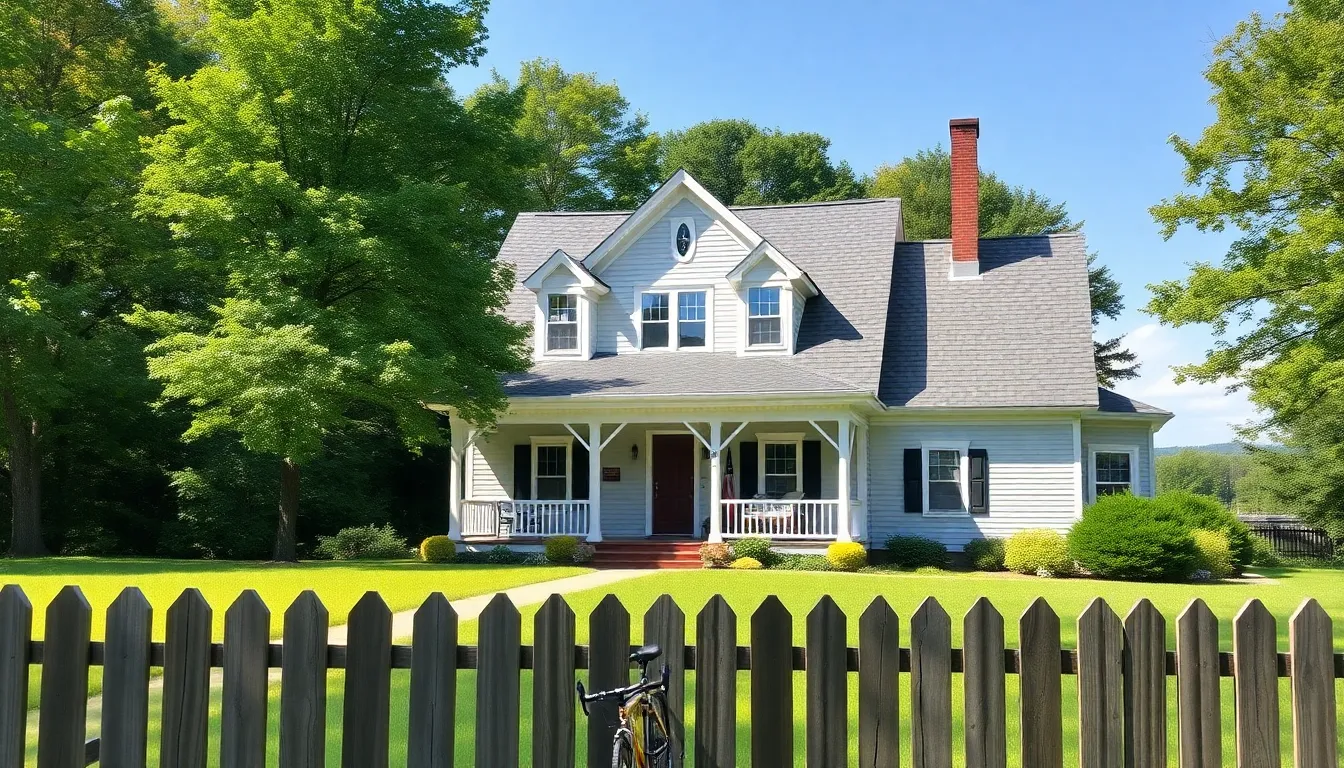Vermont’s picturesque landscapes and charming small towns make it a dream home for many. But even in this idyllic setting, life can throw unexpected curveballs. Whether it’s a surprise snowfall that turns your roof into a winter wonderland or a raccoon that thinks your attic is the perfect Airbnb, having the right home insurance can save the day.
Table of Contents
ToggleOverview of Vermont Home Insurance
Vermont home insurance offers protection tailored for the unique risks homeowners face in the state. This coverage typically includes dwelling protection, personal property coverage, liability coverage, and additional living expenses. Homeowners often customize their policies to fit specific needs, addressing factors such as property value and location.
Natural disasters pose a significant risk in Vermont, as snowfall and ice can lead to property damage. Home insurance helps ensure financial security in the event of roof collapses or water damage caused by melting snow or ice damming. Additionally, wildlife encounters, while rare, can result in damage to property or landscaping, making comprehensive coverage essential.
In Vermont, the average home insurance premium averages around $1,100 annually, depending on factors like home type and coverage limits. Many insurers offer discounts for bundling policies, installing security systems, or maintaining a good claims history. It’s advisable for homeowners to shop around, comparing multiple quotes to find the most competitive rates and suitable coverage.
Policies often include specific endorsements that cater to Vermont’s needs, such as coverage for water runoff and natural disasters common in the region. Homeowners must understand their policy limits and exclusions to ensure adequate protection against unexpected events. Knowledge of state regulations also plays a critical role in selecting the right insurance, as local laws may impact coverage options.
Home insurance serves as a vital component of homeownership in Vermont, providing peace of mind. Having the right coverage enables homeowners to enjoy life in scenic surroundings without the fear of financial loss from unpredictable events.
Types of Coverage

Vermont home insurance provides several coverage types that cater to the unique needs of homeowners. Each coverage option protects different aspects of a home and personal belongings.
Dwelling Coverage
Dwelling coverage protects the structure of the home from various risks, including fire, wind, and snow damage. It covers the physical components such as walls, roof, and foundation. Homeowners can also include additional structures like garages and decks under this coverage. Coverage amounts typically reflect the replacement cost of the home, ensuring adequate financial support for repairs or rebuilding.
Personal Property Coverage
Personal property coverage safeguards the belongings inside the home, including furniture, electronics, and clothing. Homeowners can receive compensation for loss or damage due to theft, fire, or vandalism. Policies often cover personal items even when they’re away from home, like when traveling. Optional endorsements may provide extended protection for high-value items, such as jewelry or artwork, enhancing overall security.
Liability Coverage
Liability coverage protects homeowners from legal claims resulting from injuries or accidents on their property. It covers medical expenses and legal fees if someone gets hurt or if property damages occur. Many policies include a minimum liability limit, often around $100,000, but higher coverage limits are available for additional peace of mind. This coverage becomes essential in safeguarding financial stability and legal responsibility in various situations.
Factors Affecting Premiums
Vermont home insurance premiums depend on various factors that influence overall risk. Location plays a significant role in determining insurance costs.
Location and Risk Assessment
Natural disasters can impact risk levels in specific areas. Certain regions in Vermont may face higher risks from flooding, snow, or wildlife encounters. Insurance companies assess these risks when calculating premiums. Homes situated in high-risk zones often incur higher rates. Proximity to emergency services also affects premiums, as quicker response times can mitigate potential damage. Additionally, local crime rates contribute to premium calculations, with higher crime areas usually facing increased costs.
Home Value and Features
The home’s value significantly affects insurance premiums. Higher property values lead to increased reconstruction costs, resulting in higher rates. Specific home features influence these costs as well. Installations, such as fire-resistant roofing or security systems, can lower premiums. Age and condition of the home also come into play, with older homes often facing higher rates due to potential maintenance issues. Ultimately, understanding these factors helps homeowners choose the right coverage for their Vermont properties.
Choosing the Right Policy
Selecting the right home insurance policy ensures protection against the unique challenges encountered in Vermont. Homeowners must evaluate their specific needs to tailor coverage effectively.
Assessing Your Needs
Understanding individual risks forms the foundation for choosing coverage. Some homeowners may prioritize dwelling protection against snow and ice damage. Others might focus on personal property coverage for valuable items inside their homes. A thorough assessment includes considering factors like location and potential wildlife encounters. Establishing these priorities ensures adequate protection aligns with personal circumstances and financial situation.
Comparing Insurance Providers
Comparing different insurance providers helps homeowners find suitable coverage and competitive rates. Numerous companies operate within Vermont, each offering various policy options. Gathering quotes from multiple insurers facilitates an informed decision. Ratings and reviews provide insight into customer satisfaction and claims experiences. Evaluating coverage limits and endorsements for local risks aids in identifying the best fit. Ultimately, diligent research enhances the likelihood of securing the most comprehensive and affordable home insurance policy.
Claim Process in Vermont
Filing a home insurance claim in Vermont involves specific steps to ensure a smooth process.
Steps to File a Claim
- Contact your insurance provider promptly to report the incident.
- Gather necessary documentation, such as photographs and receipts related to the damages.
- Complete the claim form accurately, providing detailed descriptions of the damage.
- Submit any supporting documents along with the claim form to your insurer.
- Follow up regularly to track the status of your claim.
Timely communication and thorough documentation facilitate efficient claim processing.
What to Expect During the Process
During the claim review, an adjuster evaluates damages and may conduct inspections. They assess the extent of the claim against your policy coverage. Homeowners receive updates on claim status and may need to provide additional information. Approval or denial of claims usually occurs within weeks, depending on the complexity. Obtaining a final settlement involves an agreement on damages and compensation. This structured approach ensures clarity throughout the claim process, aligning expectations with the insurer’s policies.
Vermont homeowners can find peace of mind knowing they have the right insurance coverage to protect against unique local risks. By understanding the types of coverage available and the factors influencing premiums, they can make informed decisions tailored to their specific needs.
Shopping around for competitive rates and customizing policies ensures comprehensive protection without overspending. A proactive approach to evaluating coverage options and understanding the claims process will further enhance homeowners’ security. Embracing the beauty of Vermont’s landscapes is more enjoyable when homeowners know they’re safeguarded against life’s unexpected challenges.


